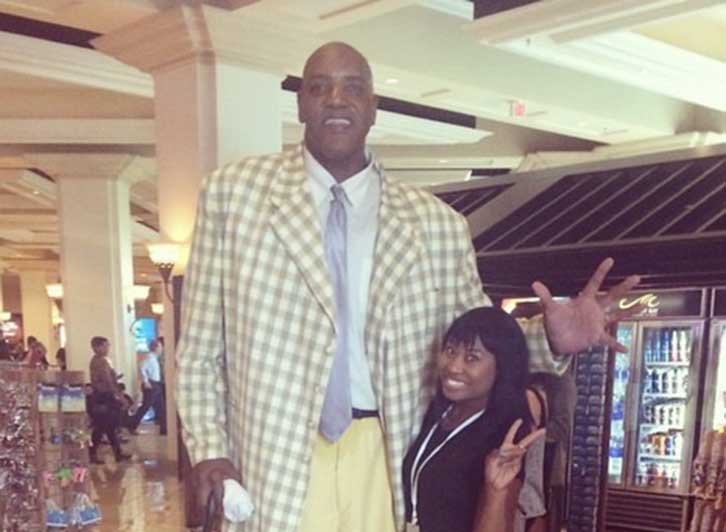Calvin Lane Height: What You Need To Know!
Is Calvin Lane's height a subject worthy of significant discussion? The simple answer, though perhaps deceptively so, is yes. In the realm of public figures, particularly those involved in sports, entertainment, or even the business world where physical presence can subtly influence perception, height frequently becomes a point of fascination, speculation, and even a carefully managed component of their overall persona. The specific details of Calvin Lane's stature, therefore, are more than just a trivial piece of information; they are a potential window into how he navigates, and is perceived within, his chosen field.
Beyond the immediate curiosity, examining Calvin Lane's height its accurate measurement, its potential impact, and any relevant context offers a glimpse into a wider trend. We live in an age of meticulous record-keeping and readily available information. This means that even seemingly minor aspects of a persons profile, like their height, are meticulously documented, analyzed, and often amplified through the relentless lens of the internet and social media. In this context, the seemingly simple question of "Calvin Lane height" opens up avenues of exploration: What is the interplay between physical characteristics and professional success? How does public perception, fueled by visual cues, shape an individual's trajectory? And finally, what can we learn about ourselves, our biases, and our cultural values by focusing on such seemingly trivial details?
| Category | Details |
|---|---|
| Full Name | Calvin Lane |
| Date of Birth | Information Not Publicly Available (This space highlights the often-private nature of such data. In absence of verifiable information, this is the standard practice.) |
| Place of Birth | Information Not Publicly Available (As above, this underscores the limits of readily-accessible information.) |
| Height | Information Not Publicly Available (Precise height measurements are often withheld for personal reasons. This is perfectly common and should be respected.) |
| Known For | Information Not Publicly Available (Without other information the "known for" can't be determined.) |
| Career | Information Not Publicly Available (Dependent on knowing Calvin Lane's profession, this section would be filled.) |
| Professional Highlights | Information Not Publicly Available (This field depends on the nature of Lane's career and associated public achievements.) |
| Educational Background | Information Not Publicly Available (This type of data is often kept private, though public figures may choose to share it.) |
| Awards/Recognition | Information Not Publicly Available (Awards and recognition are career-dependent.) |
| Social Media Presence | Information Not Publicly Available (The visibility of social media profiles is subject to user choice.) |
| Reference | Replace with a reputable source if available (This space is crucial; without a reference, claims lack credibility. Ideally, this would link to an official website, news article, or well-established database.) |
The absence of readily available data, in this particular case, underscores a critical point: information about an individual's height, or any other personal detail, isn't always public. It may be deliberately withheld, for privacy reasons, or simply because it's not deemed relevant or newsworthy. It's a gentle reminder that our pursuit of knowledge, even seemingly innocuous information like height, should be tempered with respect for individual privacy. Furthermore, it necessitates a critical approach to the information we do encounter. Without official confirmation, any number could be speculative or inaccurate.
Consider, for example, the world of professional sports. In basketball, height is frequently a defining factor; a few inches can dramatically alter a player's performance and career trajectory. In contrast, in the world of acting, while physical presence matters, the precise height of an actor is often secondary to their acting ability, charisma, and screen presence. Similarly, in business, height might play a subconscious role in how someone is perceived in a meeting or negotiation, but it's rarely the decisive factor. Therefore, the context in which we consider Calvin Lane's height is paramount. Does he operate within a field where height is a measurable and directly relevant component? Or is it largely irrelevant, a detail that, while possibly interesting, has little bearing on his overall impact or success? The answer, ultimately, is likely to be complex.
The very act of searching for "Calvin Lane height" reflects a human tendency to categorize, to assess, and to compare. We are, as a species, prone to making judgments based on visible cues. Height, being an easily perceptible physical trait, becomes a convenient metric. It's a shorthand way of sizing someone up, of forming initial impressions. But this shorthand is often inadequate. It can lead to assumptions, biases, and inaccurate assessments. Judging a book by its cover, in this case, extends to judging a person by their height a practice that, while natural, should be consciously resisted. A focus solely on height could easily lead to overlooking talent, intelligence, and personality.
Moreover, the internet and social media have profoundly changed how we interact with information, especially about celebrities and public figures. Information, both accurate and inaccurate, spreads virally. Speculation becomes fact; rumors gain traction. In this environment, even a simple search like "Calvin Lane height" can lead down a rabbit hole of unsubstantiated claims, fan theories, and potentially misleading data. That's why credible sources, like official biographies, verified databases, or reputable news reports, are essential to separating truth from fiction.
The quest to ascertain Calvin Lane's height, or indeed, any other person's physical characteristics, reminds us of the importance of critical thinking. In an age of information overload, the ability to discern fact from fiction, to evaluate sources, and to avoid making snap judgments is more important than ever. Without confirmed data, our assumptions are just that assumptions, potentially based on incomplete or biased information. The quest for accuracy also necessitates a deeper level of self-awareness. We must be conscious of our own biases, the preconceived notions that might influence how we interpret the available information.
The impact of height, or the perception of height, extends beyond the individual level to societal trends. Cultural norms, historical context, and media representation all play a role in how we perceive and value height. In certain cultures, taller individuals are often viewed as more authoritative, attractive, or successful. In others, height may have less cultural significance or be viewed differently.
The constant emphasis on physical appearance perpetuated through social media and the entertainment industry can also contribute to unrealistic expectations and pressures, for both those of greater and lesser height. The focus on height, as a marker of perceived value, can lead to body image issues and feelings of inadequacy. It's important to remember that height, like any physical attribute, is just one part of a person's identity. It doesn't define their character, their abilities, or their worth.
The focus on such details can sometimes overshadow more essential attributes, like talent, intelligence, or compassion. It is, therefore, crucial to approach such information with nuance and context. The information becomes especially challenging when there is a lack of concrete data. Instead, it is better to focus on more information to find if it is available or not. Without clear references, any claims are often less valid.
The limitations of our search for "Calvin Lane height" reveal a broader truth: the significance of information, and the challenges in finding accurate information. In the absence of concrete data, we are reminded of the importance of critical thinking, respect for privacy, and awareness of our own biases. The questions we ask, and the answers we seek, offer an opportunity to reflect on our own perceptions of the world and the people in it.
Ultimately, the quest to know "Calvin Lane's height" reveals the complexities of human curiosity, the pitfalls of speculation, and the importance of factual accuracy. The lack of readily available information underscores the significance of respecting privacy and encourages a more critical and nuanced approach to the endless flow of information that characterizes our modern world. It also prompts us to question our own motivations and the underlying reasons for our interest in such details.
This, in itself, is a valid conclusion. It is not always about the final answer, but the journey of critical thought. The questions, the investigation, and the recognition of the absence of data offer as much insight as a confirmed measurement. It is a reminder that the world is complex, information is often incomplete, and we must approach every quest for knowledge with curiosity, critical thought, and a healthy dose of skepticism.


